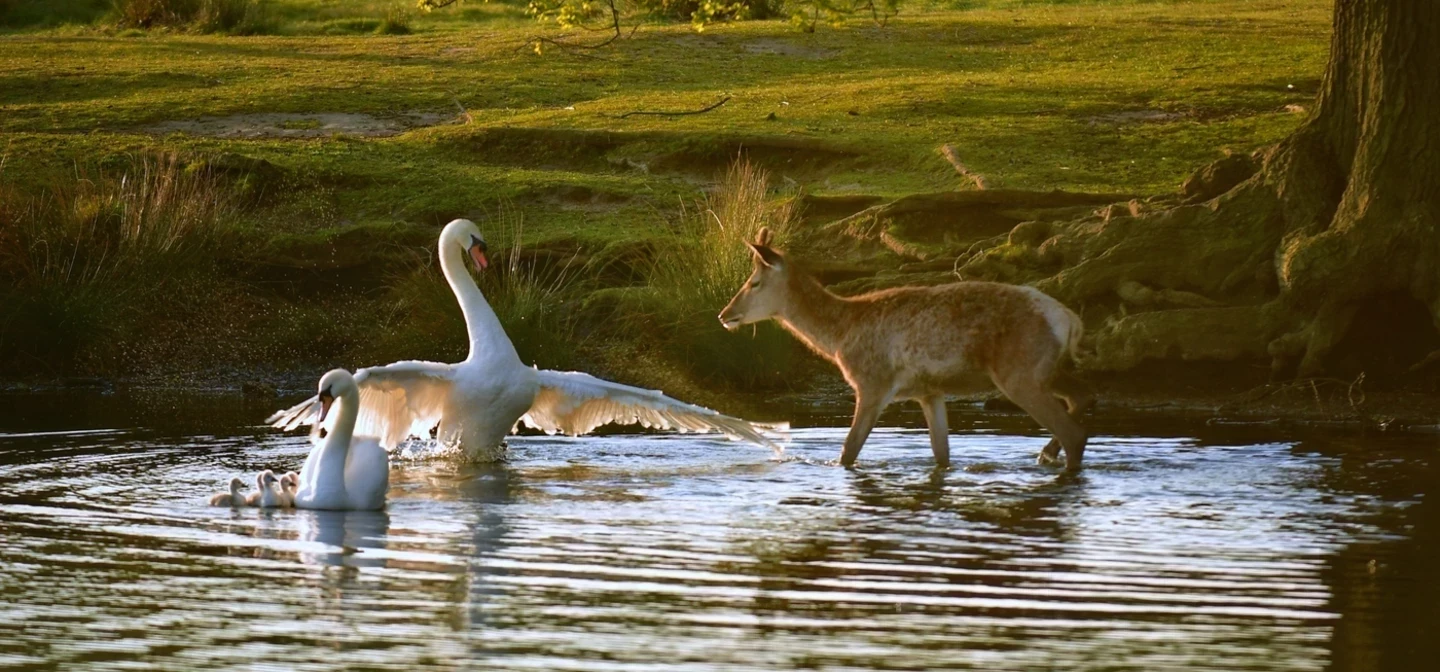
Wildlife in Richmond Park
Key information
Opening times (pedestrian gate)
24/7, vehicle gate 7am - 7:30pm
Food & drink available
Red stags rutting in the early morning mist. A kingfisher streaking across Pen Ponds. Skylarks singing high above the ancient oaks. Anthills over 150 years old.
The wildlife of Richmond Park. A world away from the ordinary.
A National Nature Reserve on the outskirts of London
At 2,500 acres, Richmond is the largest of the Royal Parks, and a unique mix of habitats, from wetlands and meadowlands, ancient trees and acid grassland – an increasingly rare habitat nationally and a conservation priority. It’s the largest area of lowland acid grassland in London. Because of that, and its 1,000 veteran trees, the park is a Site of Special Scientific Interest, a European Special Area of Conservation, and a Site of Special Importance for Nature Conservation.
Acid grassland is less fertile than other habitats, and so suited to specialist native wild plants, including fine grasses, sheep's sorrel, mouse-eared hawkweed, harebell and heath bedstraw.
Wildlife and water in Richmond Park
Many of the 25 permanent ponds and wetlands lie hidden in the landscape, and you can find one without realising it existed. The best known are Pen Ponds, a haven for terns and gulls. You may see sand martins using the nesting bank, or hear reed warblers sing. Grey herons are often seen stalking fish, motionless at the water’s edge. Kingfishers are less easily-spotted, streaking over Pen Ponds or the Beverly Brook in a flash of orange and blue.
The deer of Richmond Park
The 630 strong herd of wild red and fallow deer roam freely amongst the oaks and grasslands of the park. Introduced by Charles 1 in 1637, the deer are an iconic sight in the park. Their grazing has played a huge role in shaping the landscape and maintaining the habitats. Deer may look gentle, but can be unpredictable if disturbed, so please help us to keep our wildlife wild by not feeding them, and keep at least 50m away at all times.
Birds, butterflies and bats in Richmond Park
With Richmond Park, it’s hard not to talk numbers. Because of its size and diverse mix of habitats, Richmond Park is a key sanctuary for 144 species of birds, 29 species of butterflies and 11 species of bats – many of them rare. The park was made a Special Area of Conservation given the number of globally endangered stag beetles found here.
Nature's architects
You’ll also notice tussocky mounds in the park. These are anthills of yellow meadow ants – some 400,000 anthills with many over 200 years old. Yellow meadow ants are key to the health of acid grassland habitats, and the mounds they create support a host of other wildlife -so please be careful not to tread on the anthills.
Richmond Park – different every time you visit
Because of the sheer variety and abundance of wildlife, you can return to Richmond Park over and over again – and still see or hear something new. A tree creeper climbing up or a nuthatch, climbing down a tree in search of insects. Skylarks and kestrels hovering above open grasslands, and little owls and tawny owls calling at twilight. And in the meadows and Isabella Plantation, you’ll see butterflies such as comma, Essex skippers and small coppers, or purple hairstreak butterflies high up in the oak trees.
We strive to make Richmond Park as diverse habitats as possible, whether it’s in the wilder areas or in the gardens within Pembroke Lodge, where you’ll find our pollinator garden. You’ll find plenty of practical planting ideas to boost biodiversity in your own back garden!
-
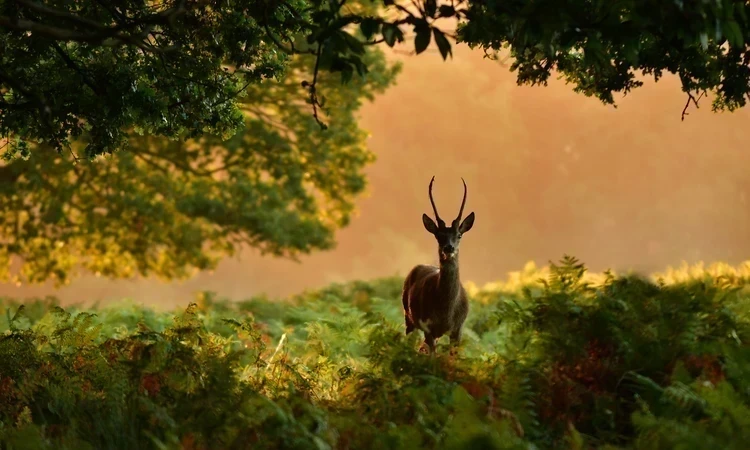
Deer in Richmond Park
Richmond Park is home to herds of wild red and fallow deer roaming freely since 1637. Find out more about and follow our deer safety advice.
-
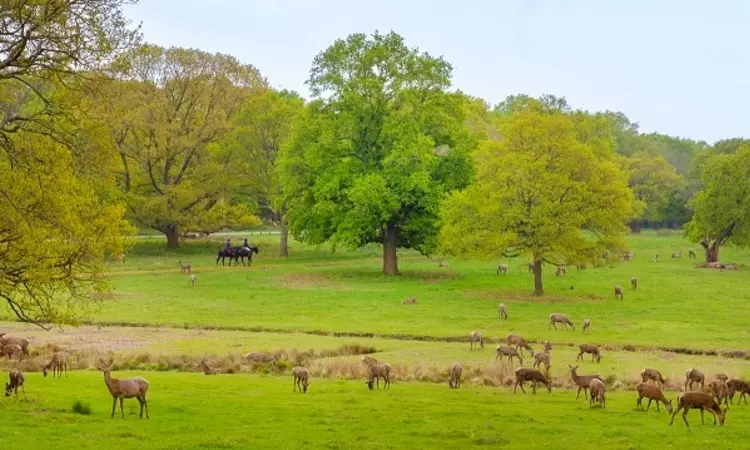
Deer safety advice
The deer in Richmond and Bushy Park are wild and can be unpredictable. Read our safety advice for park visitors including photographers and dog walkers.
-
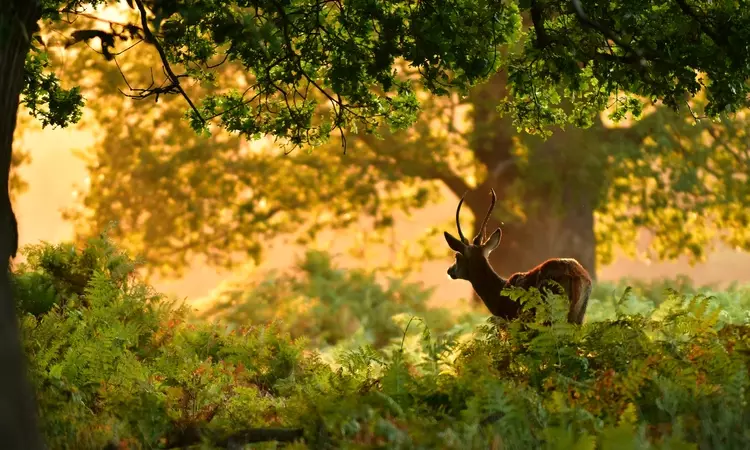
Tick bites & Lyme disease
Woodlands and parks with deer, such as Richmond Park and Bushy Park, can attract ticks. Familiarise yourself with the symptoms and prevention advice.
-

Oak Processionary Moth
Important information on Oak Processionary Moth and what you should do if you find the caterpillars or their nests.
-
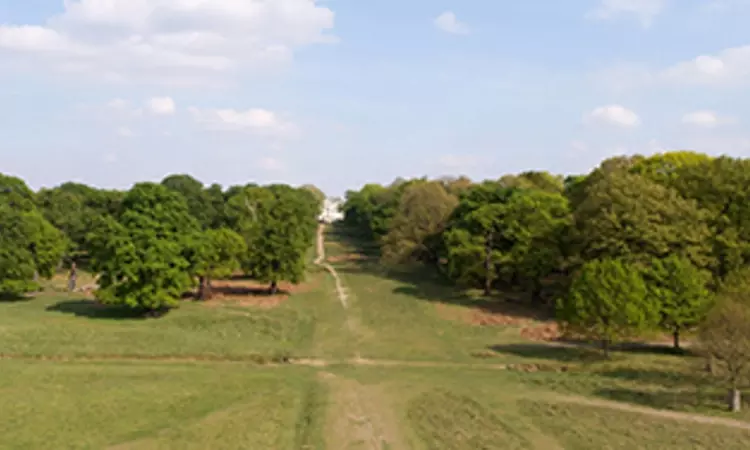
Upcoming works & restoration projects
The Royal Parks are continuing to invest in Richmond Park to further enhance the visitors' experience whilst protecting this National Nature Reserve.